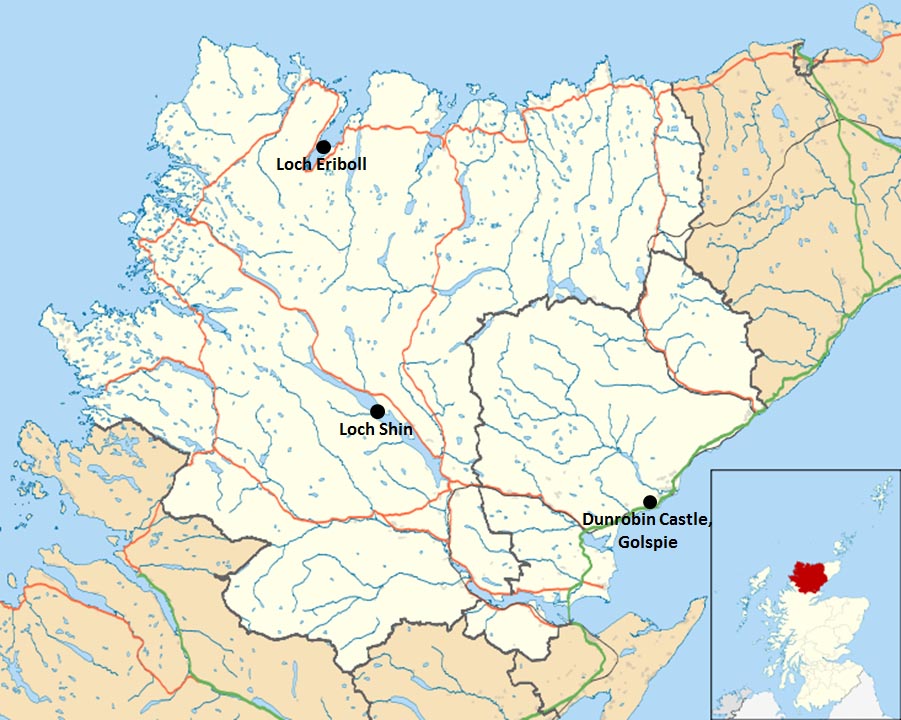Where is Sutherland?

Steam ploughing typically consists of two traction engines located on either side of the field, and connected with a steel cable. A ploughing implement is dragged between the engines, with each pulling in turn. The plough can typically pivot around a central axis to allow it to work in two directions.
Rocks and stones are then removed and often used to help form drains, boundary dykes and roads as appropriate. The ground would then be broken up, with lime spread prior to crops being sown.
In the case of the Sutherland reclamations there were significant environmental challenges: the interior consisted mostly of mountains, moors and bogs. In addition to this, the land was extremely rocky. Several adaptations were made to the standard plough design to meet these challenges (Lane, 1980). An extremely robust plough was required, so a single, large turn-furrow was used to cut through the soil rather than the four or five normally employed. In addition, very broad rollers were used to prevent the plough burying itself in soft ground. This configuration was found to perform well in ground where there were no obstructions, but the majority of land was riddled with rocks and boulders of varying sizes. These caused considerable damage to the share (the cutting head of the plough) on impact. To address this, a revolving coulter was developed. This was a steel disc placed in front of the share, cutting the soil to a depth of two inches below. When meeting a large stone, it would lift the plough over it. A further improvement was ‘the Duke’s Toothpick’. This was a large iron hook that trailed behind the rear of the plough and lifted any rocks the coulter was unable to move. Extremely large boulders would cause the engine to be backed up and the Toothpick lifted over, with dynamite or manpower used for removal. The ploughs were drawn at a slow speed, with engines operating at double their nominal power to deal with these considerable challenges. There was a trade-off to be made with power and weight, however, as larger, more powerful engines had a tendency to sink in bogs and cause delay.
